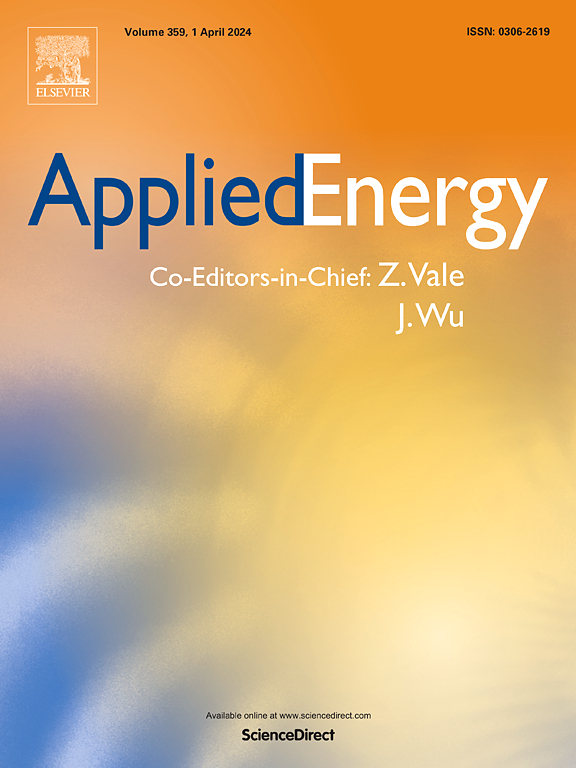Study on performance enhancement and modeling of air-cooled proton exchange membrane fuel cell for different runner structure
IF 10.1
1区 工程技术
Q1 ENERGY & FUELS
引用次数: 0
Abstract
A long, rectangular shape is typically used to model the cathode runner of an air-cooled open-cathode proton exchange membrane fuel (AO-PEMFC) cell in order to supply air and dissipate heat. It is true that modifications to the cathode runner structure can impact hydrothermal control, which consequently affects the cell's output performance. The present research put forward an enhanced design for a suction-type annular bipolar plate structure and devised a 3D non-isothermal model to explore the consequences of modifying the cathode runner structural parameters of annular bipolar plate on the cell's performance output as well as the internal dispersion of heat, water, and oxygen. In addition, three cathode runner configurations—straight runner/fan-shaped rib, fan-shaped runner/straight rib, and fan-shaped runner/fan-shaped rib—were designed and their effects examined. The findings showed that the fan-shaped runner/straight rib configuration displayed the best temperature control capability (Hot spot temperature at cathode side exit: 36.3 °C, average temperature at the center surface of the film: 302.4 K, uniformity inside the cathode flow channel: 99.8 %) and achieved the maximum power density (contact resistance: 0.098 Ω-cm2) at the same current density conditions (0.8 A/cm2). The performance of the straight runner/fan-shaped rib was marginally inferior to that of the fan-shaped runner/straight rib, while the fan-shaped runner/fan-shaped rib configuration presented the poorest performance. Owing to the interaction of high air velocity and high electro-osmotic resistance inside the cathode runner, the fan-shaped runner/fan-shaped rib bipolar plate (relative humidity: 82.2 %) was prone to water loss from the fuel cell membrane electrode, thereby having an impact on the cell performance. Conversely, the fan-shaped runner/straight rib setup (relative humidity: 46.2 %) manifested the most excellent performance and kept an optimal water content. Overall, the findings of this investigation can be used as a significant source of guidance for optimization direction of AO-PEMFC.
求助全文
约1分钟内获得全文
求助全文
来源期刊

Applied Energy
工程技术-工程:化工
CiteScore
21.20
自引率
10.70%
发文量
1830
审稿时长
41 days
期刊介绍:
Applied Energy serves as a platform for sharing innovations, research, development, and demonstrations in energy conversion, conservation, and sustainable energy systems. The journal covers topics such as optimal energy resource use, environmental pollutant mitigation, and energy process analysis. It welcomes original papers, review articles, technical notes, and letters to the editor. Authors are encouraged to submit manuscripts that bridge the gap between research, development, and implementation. The journal addresses a wide spectrum of topics, including fossil and renewable energy technologies, energy economics, and environmental impacts. Applied Energy also explores modeling and forecasting, conservation strategies, and the social and economic implications of energy policies, including climate change mitigation. It is complemented by the open-access journal Advances in Applied Energy.
 求助内容:
求助内容: 应助结果提醒方式:
应助结果提醒方式:


